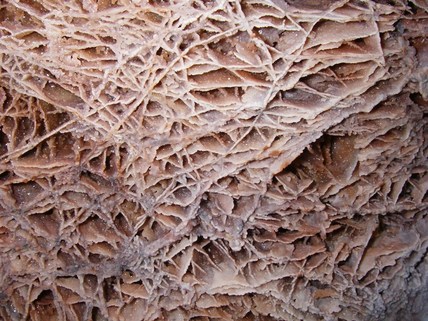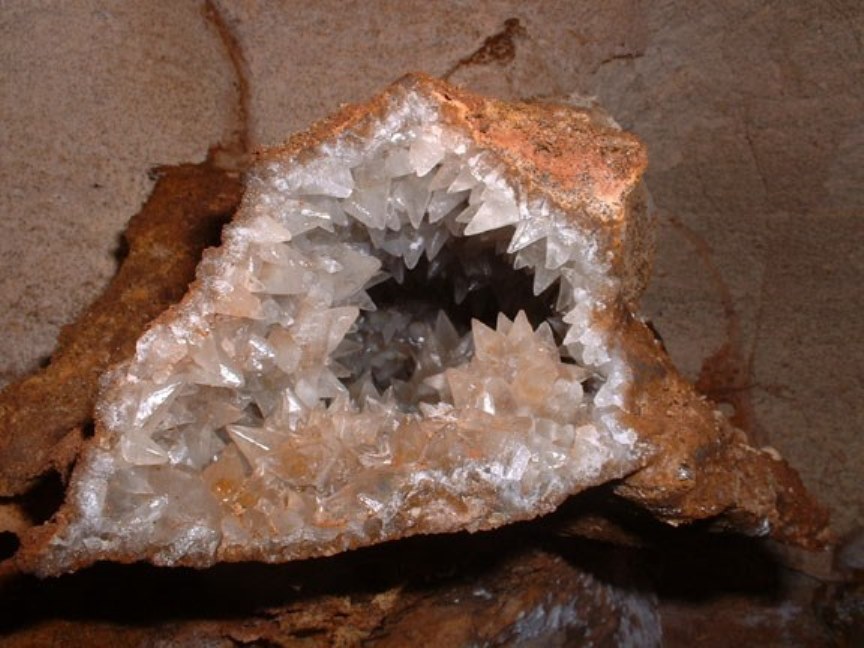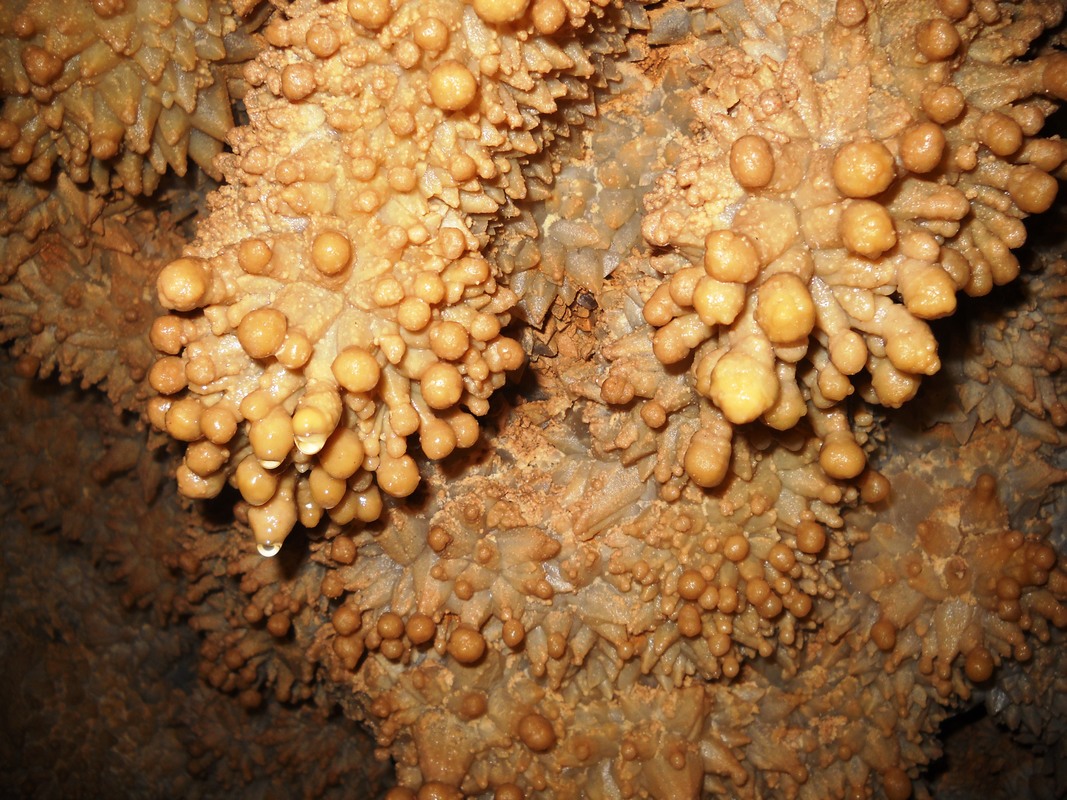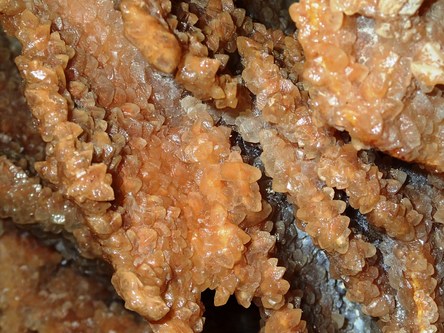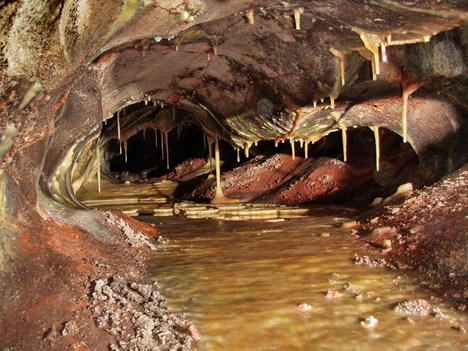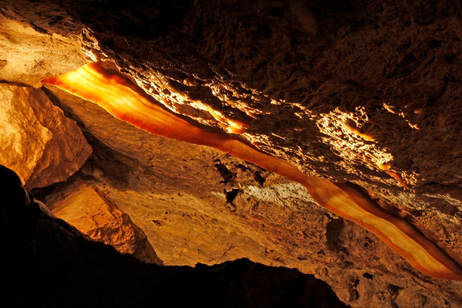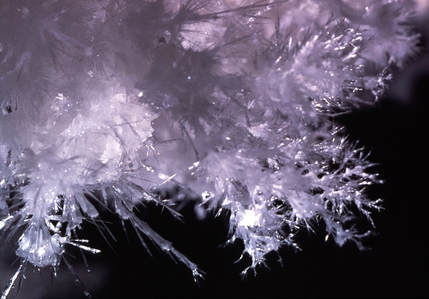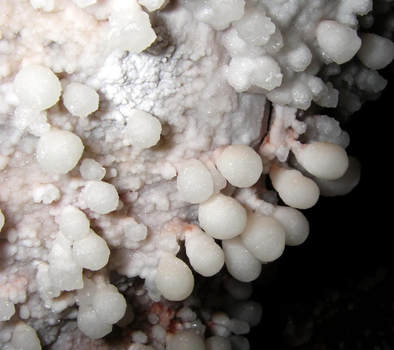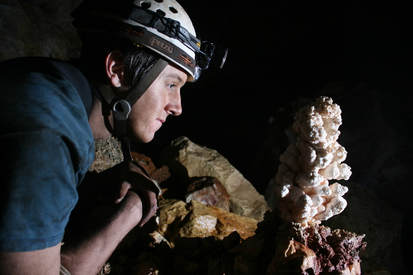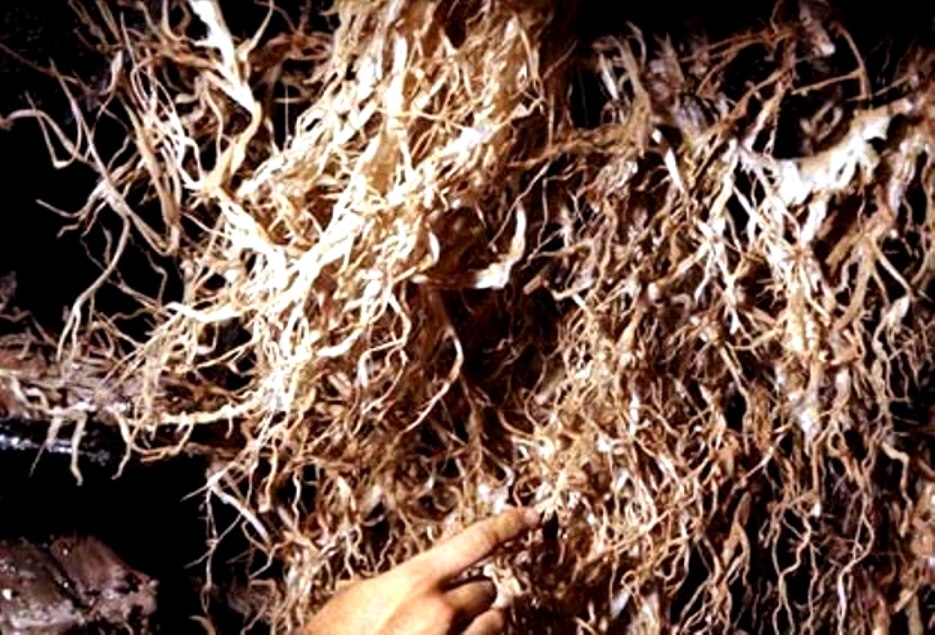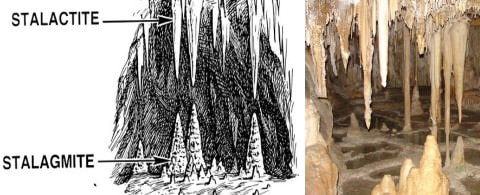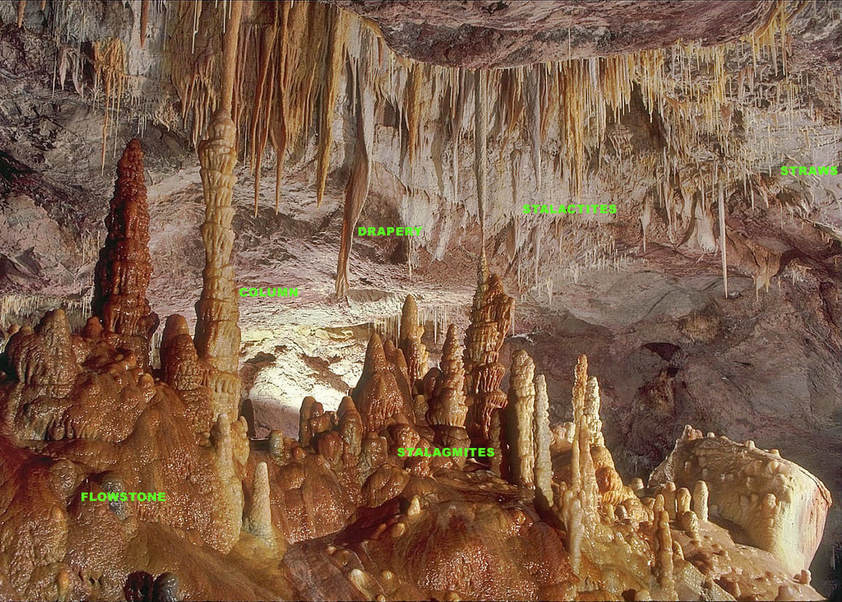Typical Subsurface Karst Features
|
Here are just a few of the subsurface karstic features seen in Black Hill caves with their generally accepted definitions and a few local photographs illuminating their characteristics. Click on the images for a closer look.
|
Wind Cave Boxwork
Dog-Tooth Spar lined Vug - Spar Incrustations are found in abundance in most Black Hills Caves
Irregular Stalactitic Growth - Bethlehem Cave
|
|
Dog-Tooth Spar encrusted Boxwork
Horsethief (Crater Ice) Cave Dripstone, Soda Straws and Flowstone overgrowths
in a phreatic "tube" - Wind Cave Ribbon Dripstone - Jewel Cave
Aragonite Frostwork - Wind Cave
Jewel Cave Grotto with Bottle Brush stalactites above Pool
Popcorn - Wind Cave
Logomite in Jewel Cave
Helictite Bush - Wind Cave
The photo above shows a a portion of a Helictite bush in Wind Cave called the "Emperor Maximus"; the entire structure is over 6 ft. tall
Soda Straw Stalactites - Gordon's Cave
Stalactites and Stalagmites
|
The labelled Photograph below is from Cave photographer Dave Bunnell's Under Earth Images Wikimedia Commons site, which shows most of the other major speleothems in a superbly decorated chamber. The photograph is not from a Black Hills cave but is too good to pass up sharing.
For more information about Cave Minerals, click on the following link to navigate to the minerals pages.
or
